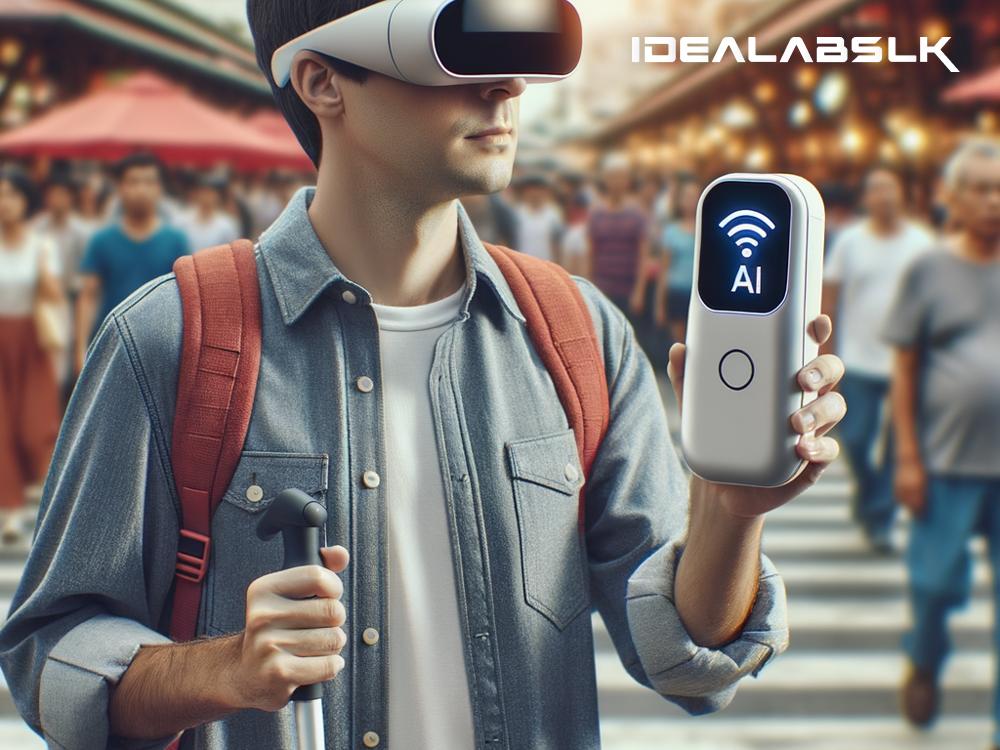How Artificial Intelligence is Enhancing the Quality of Life for People with Disabilities: Assistive Technology Solutions
In our rapidly evolving digital world, the power of Artificial Intelligence (AI) is not just a subject for science fiction movies anymore. It's real, and it's making a massive difference in the lives of millions, particularly for individuals living with disabilities. AI, with its ability to learn, adapt, and perform tasks, is driving a new era of assistive technology solutions. These advancements are not just changing lives; they're redefining what's possible, offering newfound independence and improving the quality of life for people with disabilities.
What is Assistive Technology?
Before diving into the wonders of AI-driven solutions, let's understand what assistive technology is. In simple terms, assistive technology includes devices or systems that help individuals with disabilities perform tasks that might otherwise be difficult or impossible. This could range from wheelchairs to voice recognition devices. The goal is always the same: to empower and enable greater independence.
How AI Comes Into Play
AI takes assistive technology to the next level. By integrating AI, devices become smarter, more intuitive, and highly personalized to the user's needs and preferences. Here are some key areas where AI is making a significant impact:
-
Communication Enhancement: For individuals who face challenges with speech, AI-powered devices can turn text into natural-sounding voice, allowing for smoother, more natural conversations. Apps can now also predict what the user might want to say next, making communication faster and more efficient.
-
Vision Assistance: AI is a game-changer for the visually impaired. Smart glasses equipped with AI can interpret and verbally describe the environment around the wearer, identify objects, and even read text out loud from books or screens. This not only aids in navigation but also in everyday tasks, making the world more accessible.
-
Learning and Cognitive Support: AI-enabled tools are providing personalized learning experiences for individuals with cognitive disabilities. These tools can adapt to the learning pace of the user, offering support in areas like reading and math, thus making education more inclusive.
-
Mobility and Independence: Robotics, powered by AI, is enabling people with physical disabilities to regain mobility. Exoskeletons, for example, help some people walk again, while smart wheelchairs can navigate complex environments autonomously, enhancing the user's independence and freedom.
-
Daily Living Assistance: From smart homes controlled by voice to AI personal assistants, technology is assisting in daily tasks that many of us take for granted. Simple commands can control lights, lock doors, or remind you to take your medicine. For people with disabilities, this level of control is transformative.
The Future is Inclusive
The advancements in AI-driven assistive technology are not just about creating cool gadgets; they're about breaking down barriers and building a more inclusive society. The potential for AI to enhance the quality of life for people with disabilities is immense, and we're just scratching the surface. As technology continues to evolve, the key will be ensuring these solutions are accessible to all who need them, not just those who can afford them.
Challenges Ahead
Despite the incredible progress, challenges remain. High costs, a need for ongoing customization, and technical support are significant hurdles. Moreover, there is a continuous need for training so users can fully benefit from these technologies. Collaboration between tech companies, governments, and disability advocates is crucial to address these issues and ensure these advancements truly benefit everyone.
A More Empowered Future
The future empowered by AI looks bright, particularly for individuals with disabilities. As technology evolves, the emphasis is on creating solutions that are not just functional but also empowering, enabling people to live their lives with dignity and independence. The journey of AI in enhancing assistive technology is a testament to human innovation and empathy, highlighting how technology, when directed towards noble causes, can indeed make the world a better place for everyone.
In conclusion, AI is not just changing the world; it's making it more inclusive, one technological breakthrough at a time. Assistive technologies powered by AI are enhancing the quality of life for people with disabilities, providing them with greater independence and the opportunity to engage more fully in all aspects of life. As we move forward, the potential for further innovation is limitless, promising a future where technology continues to serve humanity, making every aspect of life accessible to all.

